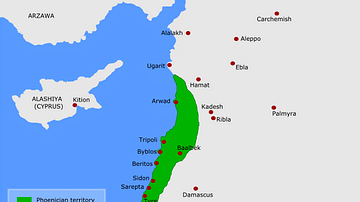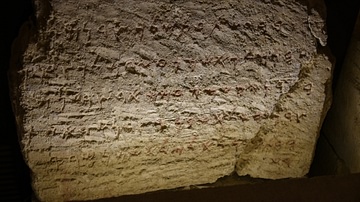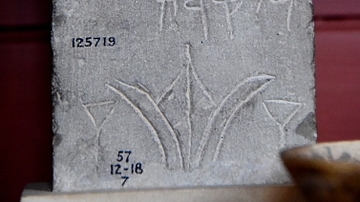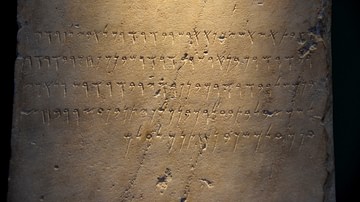Illustration
Plaster mould of a stela found in Sam'al (modern Zincirli, Turkey), dated to 825 BCE. It shows king Kulamuwa alongside a long inscription in Phoenician writing. In his left hand, the king holds a lotus in his left hand and four divine symbols in his right. The four symbols above his head can be interpreted to represent the four deities Hadad, Rakib-El, Shamash and the moon god.
Written in Phoenician, the text starts with the words: "I am Kulamuwa, son of Hayya." The text then goes on to describe that after his predecessor's inaction Kulamuwa achieved great things. He also speaks of his people and their two communities, the Mushkabim and the Baririm (possibly the Hittites and the Aramaeans).
Pergamonmuseum, Berlin.
About the Author
Photo Location
This photograph was taken at the following location:
Cite This Work
APA Style
Crabben, J. v. d. (2021, October 01). Stela of Kulamuwa with Phoenician Inscription. World History Encyclopedia. Retrieved from https://www.worldhistory.org/image/14667/stela-of-kulamuwa-with-phoenician-inscription/
Chicago Style
Crabben, Jan van der. "Stela of Kulamuwa with Phoenician Inscription." World History Encyclopedia. Last modified October 01, 2021. https://www.worldhistory.org/image/14667/stela-of-kulamuwa-with-phoenician-inscription/.
MLA Style
Crabben, Jan van der. "Stela of Kulamuwa with Phoenician Inscription." World History Encyclopedia. World History Encyclopedia, 01 Oct 2021, https://www.worldhistory.org/image/14667/stela-of-kulamuwa-with-phoenician-inscription/. Web. 21 Apr 2025.








